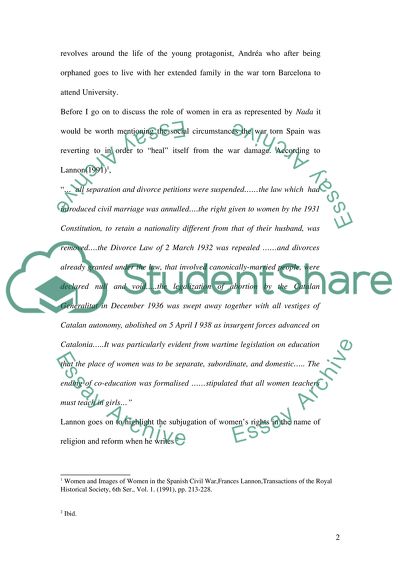Cite this document
(“The role of women in Francoist society represented in Carmen Laforet's Essay”, n.d.)
Retrieved from https://studentshare.org/miscellaneous/1506597-the-role-of-women-in-francoist-society-represented-in-carmen-laforets-nadanothing
Retrieved from https://studentshare.org/miscellaneous/1506597-the-role-of-women-in-francoist-society-represented-in-carmen-laforets-nadanothing
(The Role of Women in Francoist Society Represented in Carmen Laforet'S Essay)
https://studentshare.org/miscellaneous/1506597-the-role-of-women-in-francoist-society-represented-in-carmen-laforets-nadanothing.
https://studentshare.org/miscellaneous/1506597-the-role-of-women-in-francoist-society-represented-in-carmen-laforets-nadanothing.
“The Role of Women in Francoist Society Represented in Carmen Laforet'S Essay”, n.d. https://studentshare.org/miscellaneous/1506597-the-role-of-women-in-francoist-society-represented-in-carmen-laforets-nadanothing.


